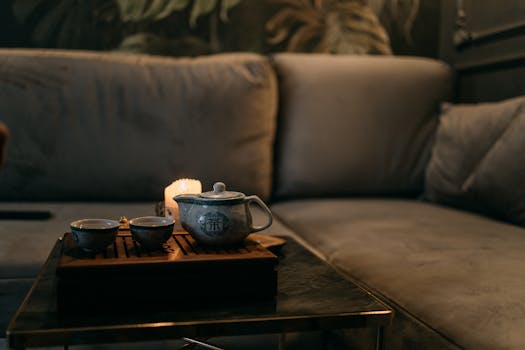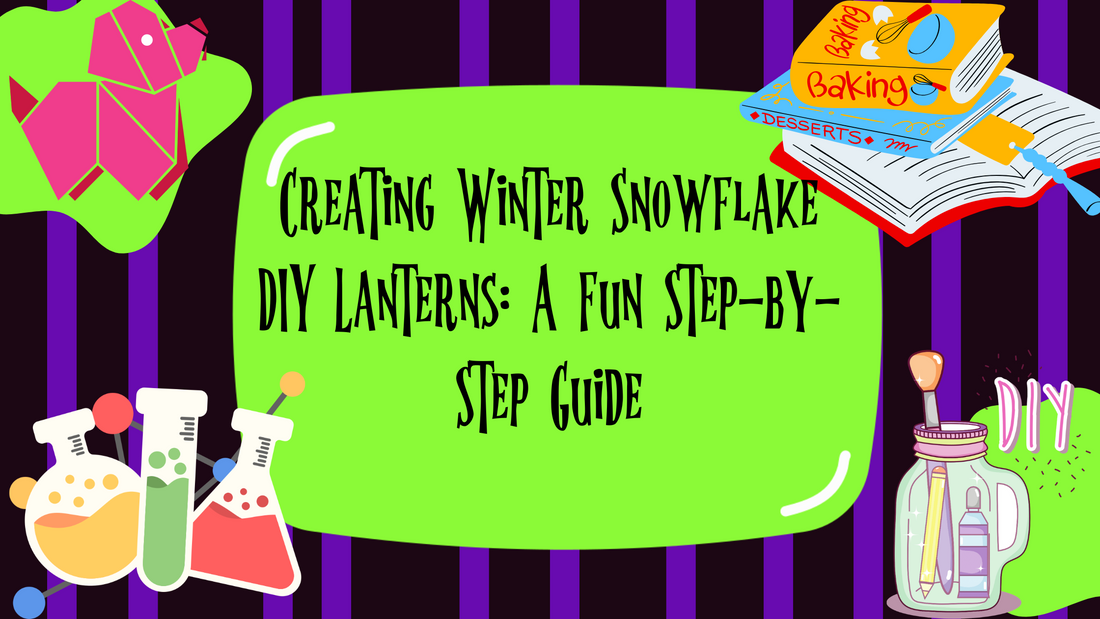As an affiliate, I earn from qualifying purchases, but this doesn't affect the reviews or recommendations—your trust is important to me!
Creating DIY Rainbow Lava Lamp Experiment at Home

Today, We're Making:
- - DIY Rainbow Lava Lamp Experiment
- - 'Galaxy in a Jar' Project: Using cotton balls, paint, glitter, and a clear Mason jar, kids can create their own miniature galaxy. This DIY project can be linked to the space exploration importance day.
What if you could bring a vibrant spectacle of color, science, and creativity right at home?
Welcome to our dazzling DIY Rainbow Lava Lamp Experiment, a fun, vibrant, and incredibly enlightening journey perfect for everyone, especially those young curious minds. A fascinating blend of science DIY projects and enchanting rainbow home décor, this exercise not only illuminates your space with hues but also inflames passion for learning through homemade lava lamp creations.
So, whether you're searching for an engaging way to introduce your tiny tots to the wonders of household science experiments, or you're an avid DIYer seeking a new artistic outlet, join us as we dive into an immersive experience of crafty chemistry, shedding light on how to craft a rainbow lava lamp right in the comfort of your abode.
So tell me, are you ready for a splash of color and a dash of scientific discovery?
Art and Science in a Bottle: Crafting the DIY Rainbow Lava Lamp
Let's first understand the charm of our project: the DIY Rainbow Lava Lamp. This enchanting venture combines science and creativity to arouse wonder and amazement. Picture this, majestically floating blobs of rainbow-colored wax ascending and descending inside a clear container filled with liquid. Sounds mesmerizing, doesn’t it? This visualization is exactly what you'd achieve with your completed lava lamp at home.
The experience of creating a lava lamp provokes a sense of magic, while quietly teaching the science behind the spectacle. It offers an engaging sneak peek into the wonders of density and immiscibility, demonstrating how oil and water don't mix and how the bubbling effect is concocted. No doubt, this experiment with science at home allows kids, and even grown-ups, to delve into the realm of physics through a captivating visual treat.
Step-by-Step Guide: Designing Your Rainbow Lava Lamp
Crafting a Rainbow Lava Lamp from household items is indeed a fun and easy DIY project. To help you through your scientific DIY journey, here's a simple step-by-step guide. Start off by filling a clear container with oil, leaving some room for water and effervescent tablets. Subsequently, add drops of different food colors, sequencing them to create a vivid rainbow effect. Don't worry if the colors don't spread; remember, it's about playing with immiscibility.
Next, pour water into the oil-filled container, ensuring that it remains beneath the oil layer. Here, you can witness the magic of density at work - heavier water sinking beneath the lighter oil. Topping off this experiment entails dropping effervescent tablets into the container and voila! You’re all set to enjoy your mesmerizing homemade lava lamp and its bobbing colorful light-show of bubbles.
Unleash the Potency of Household Science Experiments
DIY science experiments like our rainbow lava lamp not only spur children's curiosity but also fuel their passion for learning. Engaging activities like these transform abstract science theory into tangible learning experiences, making it fascinating and straightforward for kids to grasp. They provide propitious opportunities for children to understand scientific phenomena in an entertaining, easy-to-digest manner, ensuring that learning is never a chore but always a thrilling discovery.
For those looking for a refreshing addition to their home décor or a unique centerpiece, the DIY Rainbow Lava Lamp undoubtedly shines as a vibrant, artsy, and dynamic ornament that effortlessly styles up any living space. As a mix of science DIY projects and rainbow home décor, this project beautifully amalgamates learning with creativity, making it an ideal pick for everyone across the age spectrum.

DIY Rainbow Lava Lamp Experiment: A Vivid Voyage of Science, Art, and Creativity
As we wrap up our colorful journey, it's clear that this DIY Rainbow Lava Lamp experiment is more than just a charming visual experience, it's a vivid voyage into the realms of science, art, and creativity. A project that encapsulates the excitement of learning, the wonder of discovery, and the relaxation of crafting, serving to inspire curious minds and artistic souls alike.
There's simply nothing quite like watching your very own lava lamp come to life, as its vivid colors dance, and the science unfolds before your very eyes. So, remember when the world seems a little too grey, it's up to us to add some rainbow hues and remind ourselves of the magic that science can bring into our lives.
The world is, indeed, a canvas. Now, go grab your paintbrush - or in this case, your empty jar - and let's color it with knowledge, creativity, and a whole lot of fun!
```html

You May Also Like These:
Galaxy in a Jar STEM Project
The 'Galaxy in a Jar' is a fun and easy STEM project you can do with your child at home. Below are the ingredients needed and the step-by-step instructions to create your very own galaxy in a jar.
Ingredients:
- Cotton balls (around 4-5 cotton balls per jar)
- Clean and clear glass jar (baby food jars would be great!)
- Glitter Glue in various colors (blue, purple, and red work great)
- Water
- Spoon
- Disposable cups (1 for each color of glitter glue)
Instructions:
- Start by taking your empty glass jars and making sure they are clean.
- In your disposable cups, mix glitter glue and water. You want a 50-50 mix of glue and water for each color. Stir until it's well mixed.
- Take your cotton balls and stretch them out a bit to make them look more like clouds.
- Put a layer of your cotton balls at the bottom of each jar.
- Pour your first color of glitter glue and water mix over the cotton balls to the top of the cotton (Do not completely cover it!)
- Add another layer of stretched cotton balls, press them down with the spoon to the level of the glue.
- Repeat the process with different colors, alternating between adding glitter glue mix and a layer of cotton balls.
- Make sure to end with a cotton layer at the very top.
- Close the jar tight. Your galaxy is now ready!
Note: This is a fun and engaging way of introducing children to the concept of galaxies. Have fun and enjoy the project!
STEM Project: Glitter Galore
Ingredients
- 1 tablespoon of glitter
- 1 bottle of clear glue
- 1 cup of warm water
- 1 teaspoon of Borax
- Extra glitter for decorating
Instructions
- Pour the entire bottle of clear glue into a mixing bowl.
- Add glitter into the mixing bowl.
- Stir these ingredients together.
- In a separate container, mix 1 cup of warm water with the Borax.
- Slowly add this solution to your glitter and glue mixture.
- Mix thoroughly until a blob of glitter slime forms.
- Knead the slime with your hands until it becomes less sticky.
- Beatify your clear slime by adding more glitter of your choice and knead to spread.
- Congratulations, you've just completed a STEM project!
Note: Always clean up your workspace when you're done.
Glitter Volcano STEM Project
Ingredients:
- 1 Small water bottle
- 1 Box of baking soda
- 1 Bottle of white vinegar
- 1 Funnel (optional, but helpful)
- 1 Tray or dish to set the bottle in and catch overflow
- As much glitter as desired
Instructions:
- Place the water bottle in the center of the dish or tray.
- Use the funnel to fill about 1/3 of the bottle with baking soda.
- Add the glitter into the bottle on top of the baking soda. You can use as much or as little glitter as you want.
- Pour the white vinegar into the bottle. You will want to do this fairly quickly, and then step back! The reaction between the vinegar and baking soda will cause a mini explosion of glitter.
- Enjoy the show! The vinegar and baking soda react to create a fun, glittery explosion. Just make sure you do this in a place where you can easily clean up the glitter afterwards.
Note: This project is a fun and simple way to teach kids about basic chemical reactions. While the vinegar and baking soda are harmless and safe for kids, please supervise to ensure safety with the plastic bottle.
STEM Project: Creating a Constellation in a Mason Jar
Gather your young scientists and space enthusiasts for a night under the stars – indoors! This STEM and art mash-up project involves a bit of critical thinking, a dash of creativity, and a sprinkle of constellations. This step-by-step guide will help you create your own piece of the night sky using a simple mason jar.
Ingredients
- 1 clear mason jar with lid
- Small LED light (preferably blue or white)
- Black construction paper
- White paint or a white ink pen
- A printout of constellations (to act as a guide)
- Glue or tape
- Scissors
Procedure
- Cut the black construction paper to fit the inside of the mason jar.
- On the sheet of black construction paper, use the white paint or ink pen to mark the points of each constellation you want to display in your jar. The constellation printout will be your guide.
- Connect the points/dots to create the constellations. Allow the paint or ink to dry completely.
- Once dried, carefully insert the black construction paper in the mason jar, ensuring the constellations are visible from the outside. Secure it with some glue or tape if necessary.
- Switch on the small LED light and place it inside the jar, on top of the black construction paper.
- Screw on the lid of the mason jar. Your constellation mason jar is now ready to light up the room.
We hope you enjoy exploring the night sky indoors with this creative, educational, and fun STEM project!
Create Your Own Miniature Galaxy
In celebration of Space Exploration Importance Day, we have prepared this exciting STEM project for you and your kids! Get ready to create your very own miniature galaxy.
Ingredients
- One jar with lid
- Clear glue
- Glitter (in a variety of colors)
- Food coloring (blue and purple are recommended)
- Water
- Small toy stars
Instructions
- Start by filling your jar three-quarters of the way with water.
- Add a couple drops of food coloring to the water and stir until fully mixed.
- Add a good amount of clear glue into the mixture. The more glue you add, the slower your 'stars' and 'galaxies' will move in your galaxy jar.
- Add your glitter (i.e., your 'stars'), and your toy stars if you have them. Be creative with your color combinations!
- Close the lid of the jar tightly and shake the mixture until everything is well blended.
- Your mini galaxy is now ready! Feel free to shake it up and see the galaxy move and swirl.
This project is a fun and interactive way to learn about galaxies and the universe. We hope you enjoy creating and exploring your own miniature galaxies! Happy Space Exploration Importance Day!



























